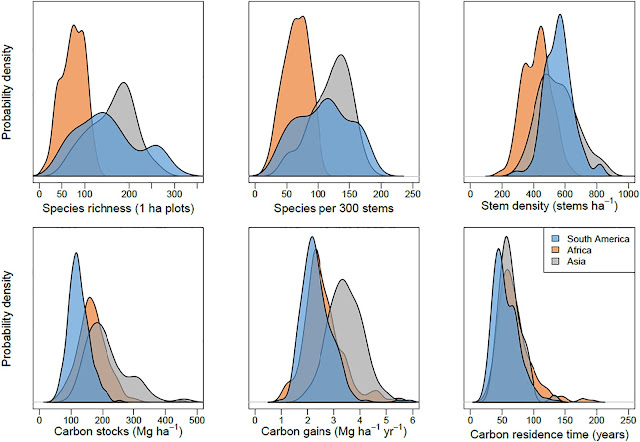By Richard B. Primack
“In the summer we lay up a stock of experiences for the winter, as a squirrel of nuts. Something for conversation in winter evenings.” Henry David Thoreau in his Journal.
Tropical forests are the most diverse and productive ecosystems on Earth. To investigate these forests, three networks of long-term forest plots have been established for South America (RAINFOR), Africa (AfriTRON) and Southeast Asia (T-FORCES). As described in a recent article, these initiatives are now integrated via ForestPlots.net cyber-infrastructure, linking colleagues from 54 countries across 24 plot networks.
 |
| Tropical Forest plots in ForestPlots.net are widely distributed across the globe with the greatest abundance in South America. |
These networks are transforming our understanding of tropical forests and their role in the global environment. For example, there is no apparent relationship between tree species richness and carbon storage either within continents or across continents.
Also, tropical forests are responding to climate change by increasing their biomass; that is, they are acting as sinks for atmospheric carbon dioxide.
 |
| Tropical forests are increasing in biomass, Asian forests (gray), increasing faster than South American (blue) and African (orange) forests. |
This network of forest plots has the potential to utilize an old technology to gain important insights into the future of these diverse forests and their role in addressing global climate change.
This article appeared as: ForestPlots.net et al. 2021. Taking the pulse of Earth’s tropical forests using networks of highly distributed plots. Biological Conservation https://doi.org/10.1016/j.biocon.2020.108849

No comments:
Post a Comment